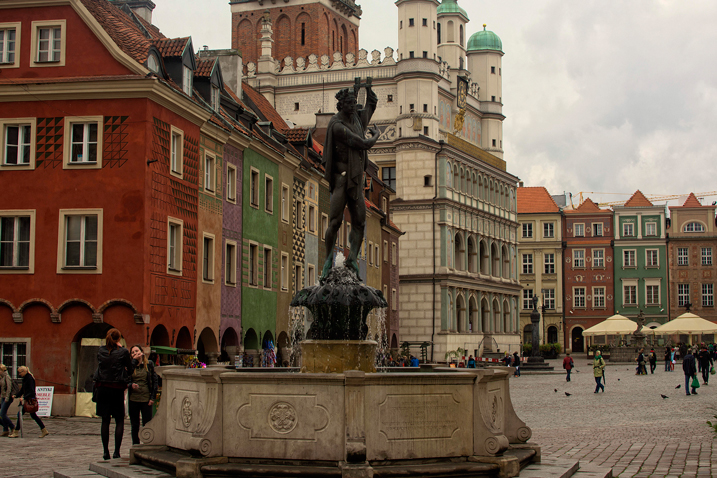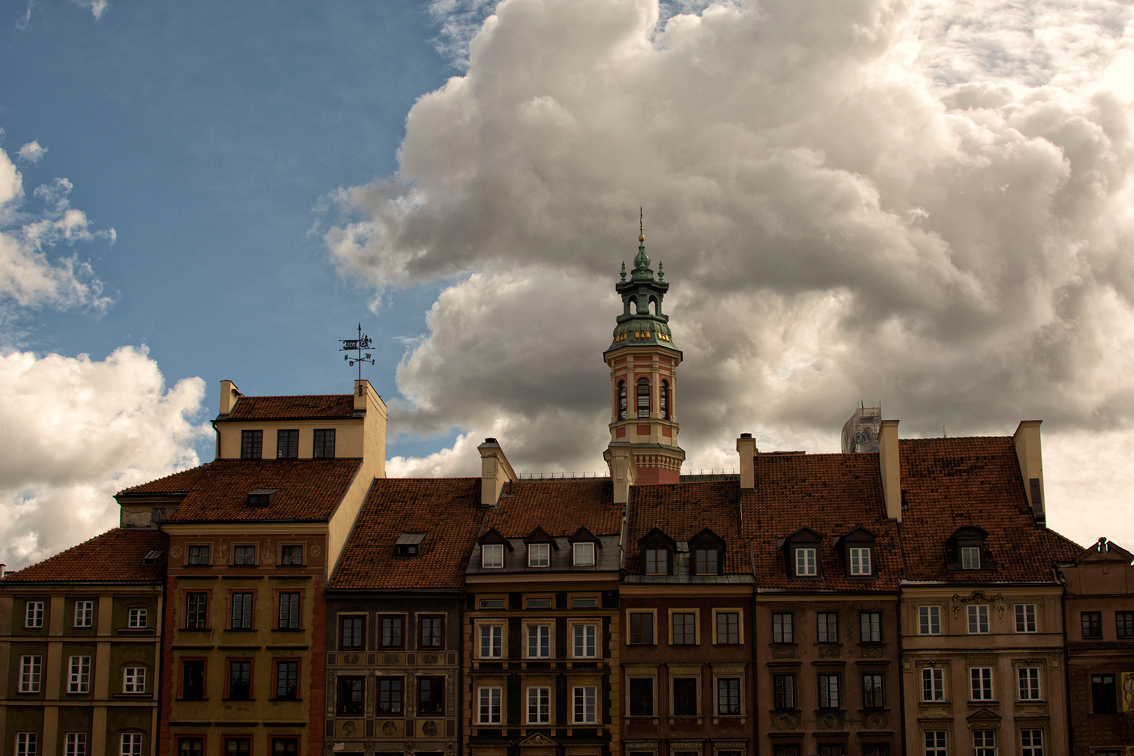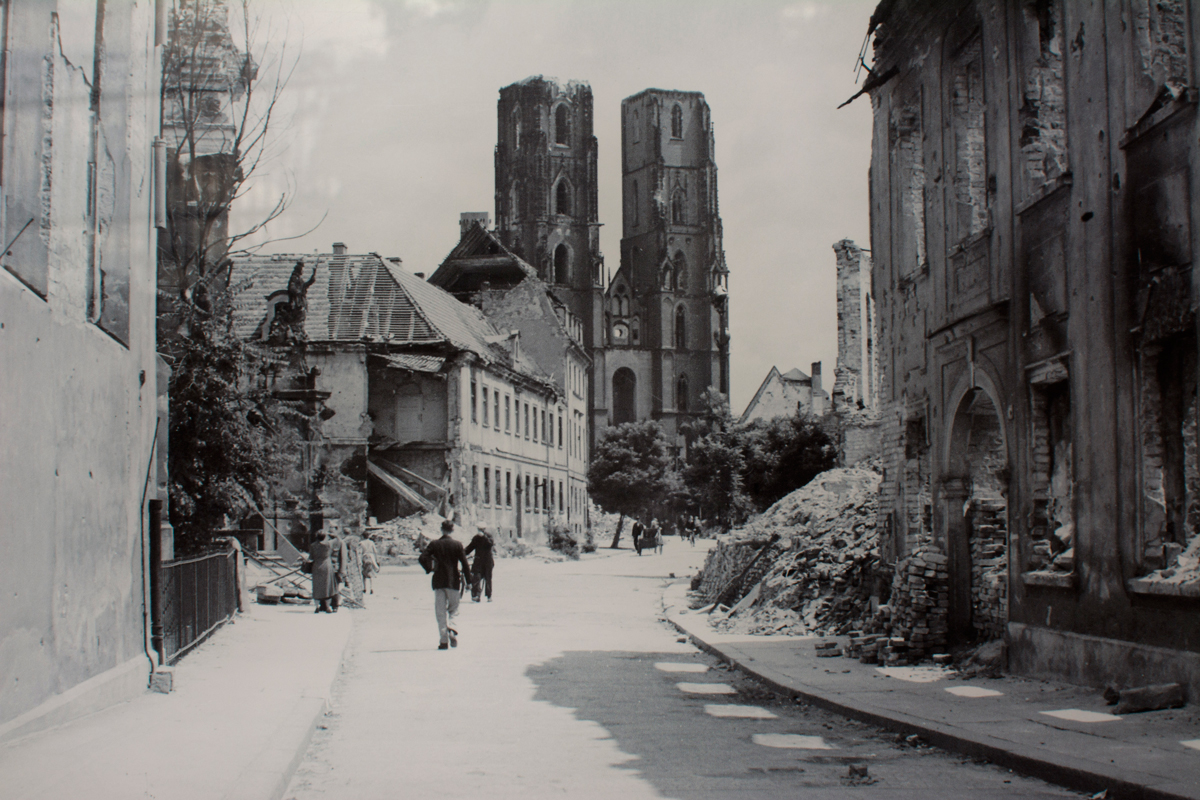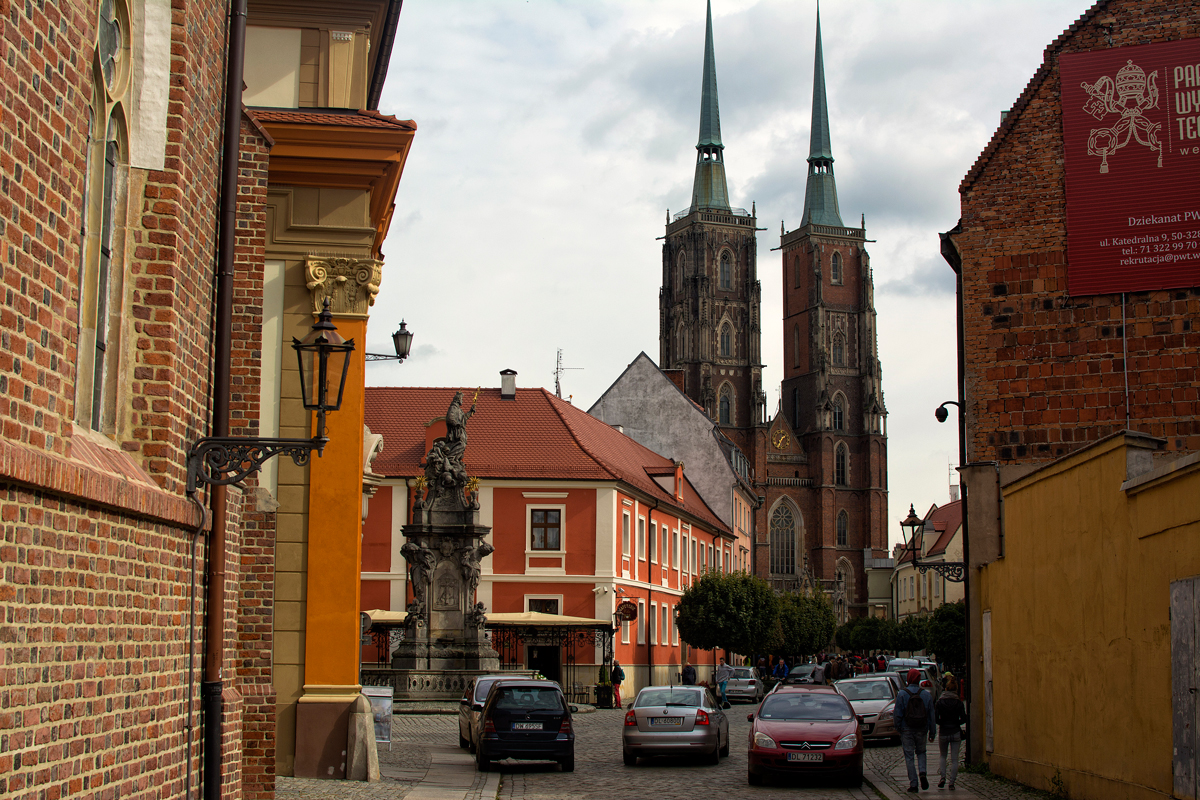Past and Present – WW2 in Poland
If you’ve been reading about our time in Poland, you have probably noticed that we’ve regularly mentioned the amazing reconstruction that has happened since the end of WW2, when most of the country sat in ruins. Calli and I thought that it might be interesting to recreate photos from the end of the war in modern times. So before arriving in each city, we perused the internet for old photos and then set out to find and rephotograph the exact spot. It turned out to be harder than we anticipated. Bridges and roads have changed or been replaced, restaurant tents advertisements are everywhere, locations are not as easy to find as you might think as these cities were just so completely destroyed. In any case, here is what we came up with – we think it is a testament to the character and attitude of the Polish people and was a fun way to explore the cities we visited.
Poznan
The Battle of Poznan (1945) was one of the last battles in WW2, and lasted nearly a month. Approximately 90% of the city center was destroyed, and has since been almost completely restored.
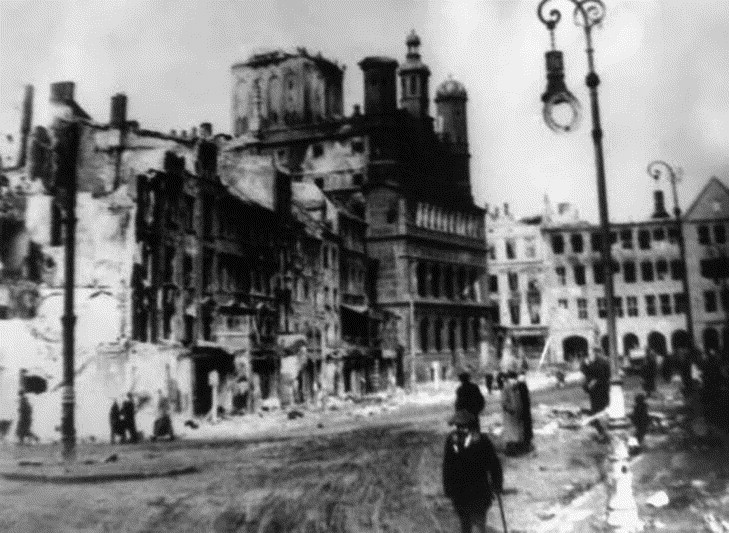
The Town Hall in Poznan’s main square in 1945…(via)
Gdansk
Gdansk was the location of the official start of WW2, and the city was one of the first to be captured and destroyed, with almost 90% of the old town turned to rubble. Many local artists and architects used old photos to reconstruct a large part of the city between 1952 and 1960.

The Golden Gate at the end of the Long Market in 1945…(via)
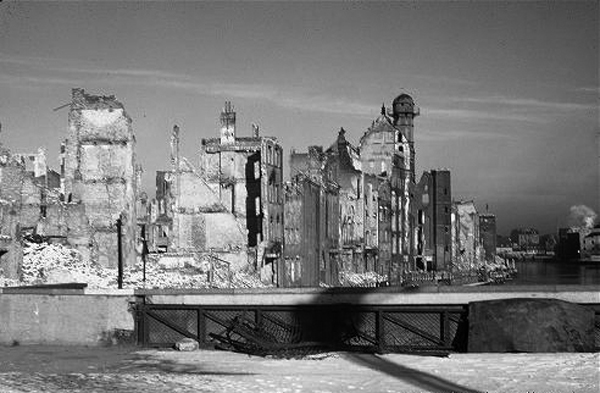
The waterfront of Gdansk in 1945…(via)
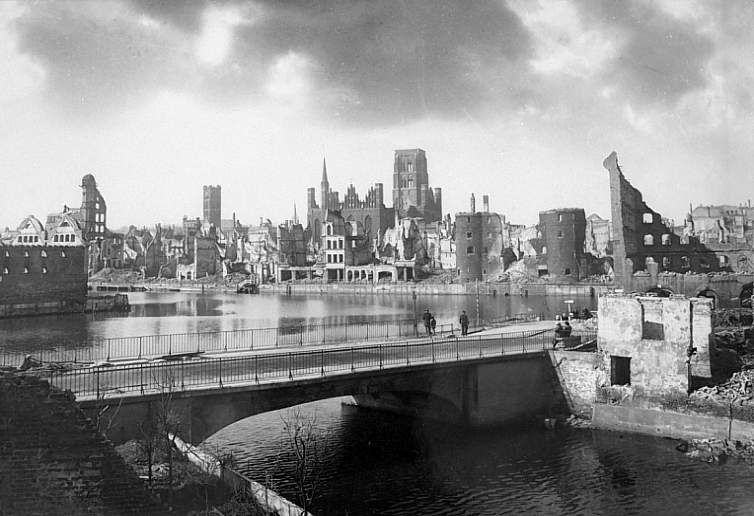
And again from another angle…(via)
Warsaw
Warsaw was probably the most heavily bombed and affected city of Poland during the war. Fighting and bombing accounted for approximately 84% of the city and nearly 100% of the old town being destroyed. Much of this was in retaliation to the Ghetto uprisings and the Warsaw Uprising, where the Nazis destroyed buildings just to hurt the morale of Warsaw’s citizens. It was most difficult to recreate a photo here as almost every distinguishable building was completely destroyed. We could only find one photo with any buildings we recognized.

The Old Town and Square were almost completely destroyed by 1945…(via)
Wroclaw
Breslau, as it was called at that time, was the last major German city to fall before the end of WWII (just two days before). Adolf Hitler proclaimed Breslau as a fortress city that must be defended at all costs, a decision which caused the Siege of Breslau to go on for 82 days, cost nearly 60,000 lives, and destroyed over 50% of the city. The city was given back to Poland at the end of the war, and is now one of the most mixed-heritage cities in all of Europe.

